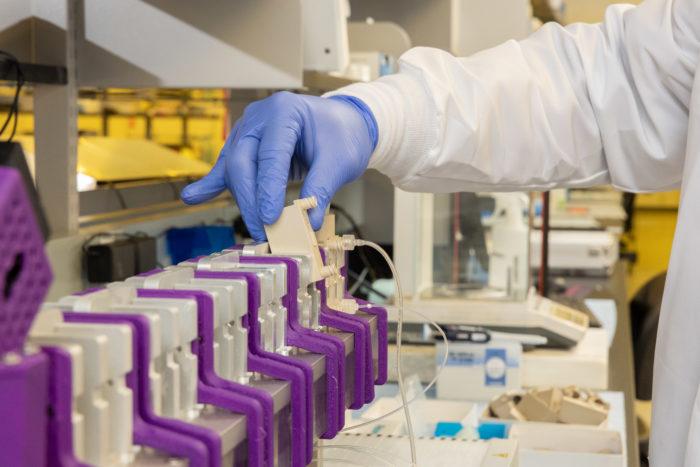In vitro Release Testing measures the rate of release of a drug from a topical formulation. MedPharm assists clients in the development and validation of IVRT methods based on FDA and EMA guidances. Our experts continue to be involved in the development of these guidances for how these methods are utilized in regulatory submissions.
Regulatory bodies are increasingly requiring the use of IVRT as a quality tool in release and stability specifications. It is used as a key tool for demonstrating generic bioequivalence.
More commonly, these assays can be used:
- In formulation development, optimization and selection.
- During development to ensure product quality and performance is maintained through quality by design (QbD).
- When making scale-up and post-approval changes (SUPAC-SS) to ensure that the final product shows equivalence.

MedPharm has successfully used validated IVRT studies, along with other performance tests, to obtain biowaivers for clients’ during the approval of generic products. This significantly reduces the cost of development and accelerates the time to market, as no clinical testing is required.
Vertical Diffusion Cells (i.e. Franz or Static cells)
MedPharm uses a range of sizes of vertical diffusion cells for its in vitro release testing. All of these diffusion cells have been fully qualified to meet FDA and EMA standards. Leveraging the different types and sizes of vertical diffusion cells allows for greater flexibility in method development and for IVRT method trasfer from other labs.
Automated Vertical Diffusion Cells
MedStat-HT™ is a proprietary automated system of 24 vertical diffusion cells (VDC), also known as ‘Franz’ or ‘static’ cells. This system is used to measure the in vitro release of drug from topical medicines across synthetic membranes (IVRT). Unique design features, along with automated collection, provide significant reduction in variation associated with sampling and fluidics compared to manually operated VDC systems.
The key benefits of the new system are:
- Better characterization of formulation drug release for potential patent claim support
- Formulation optimization and comparison
- Robust product quality and stability specifications
- A reduction in experimental time with less variability
- Compliance with FDA, EMA and OECD guidelines

